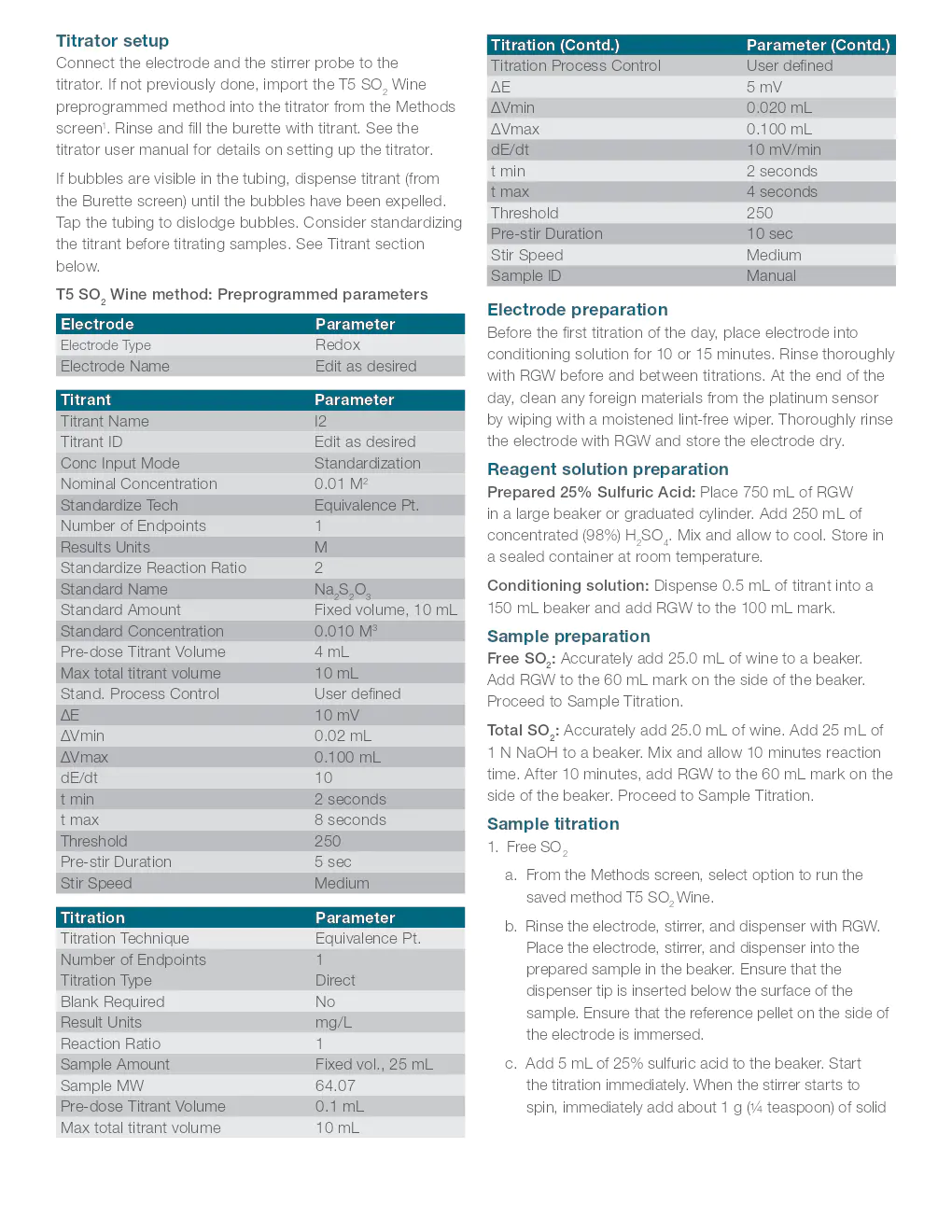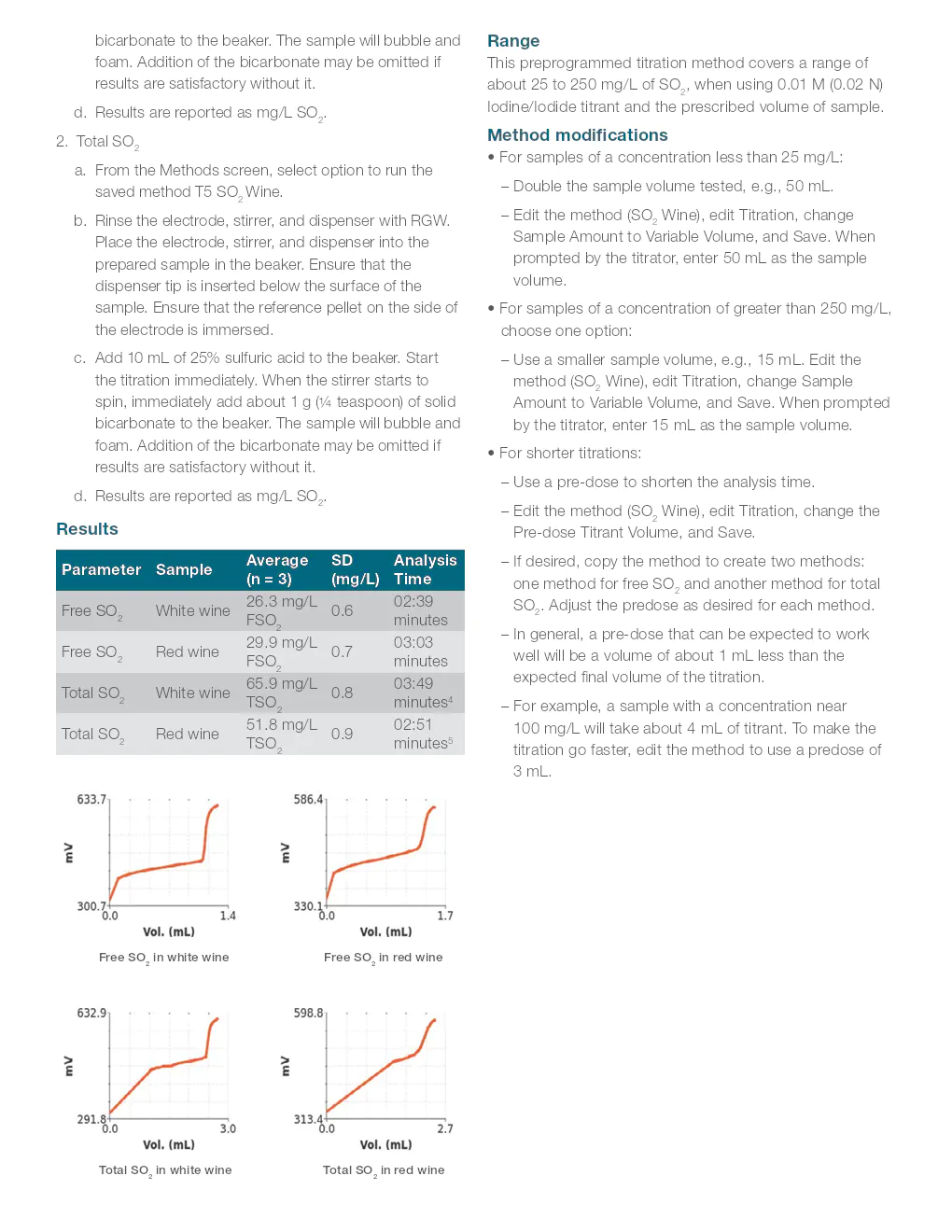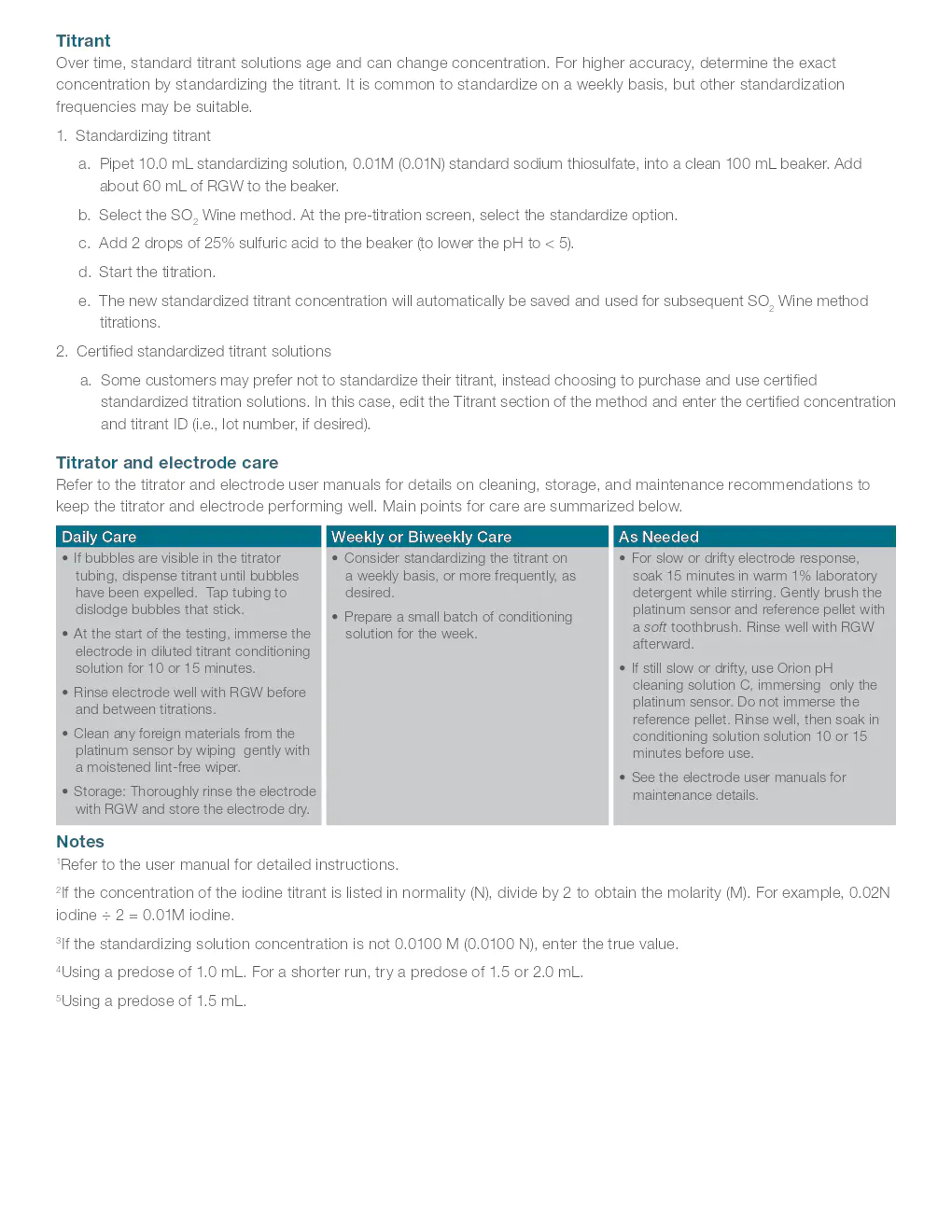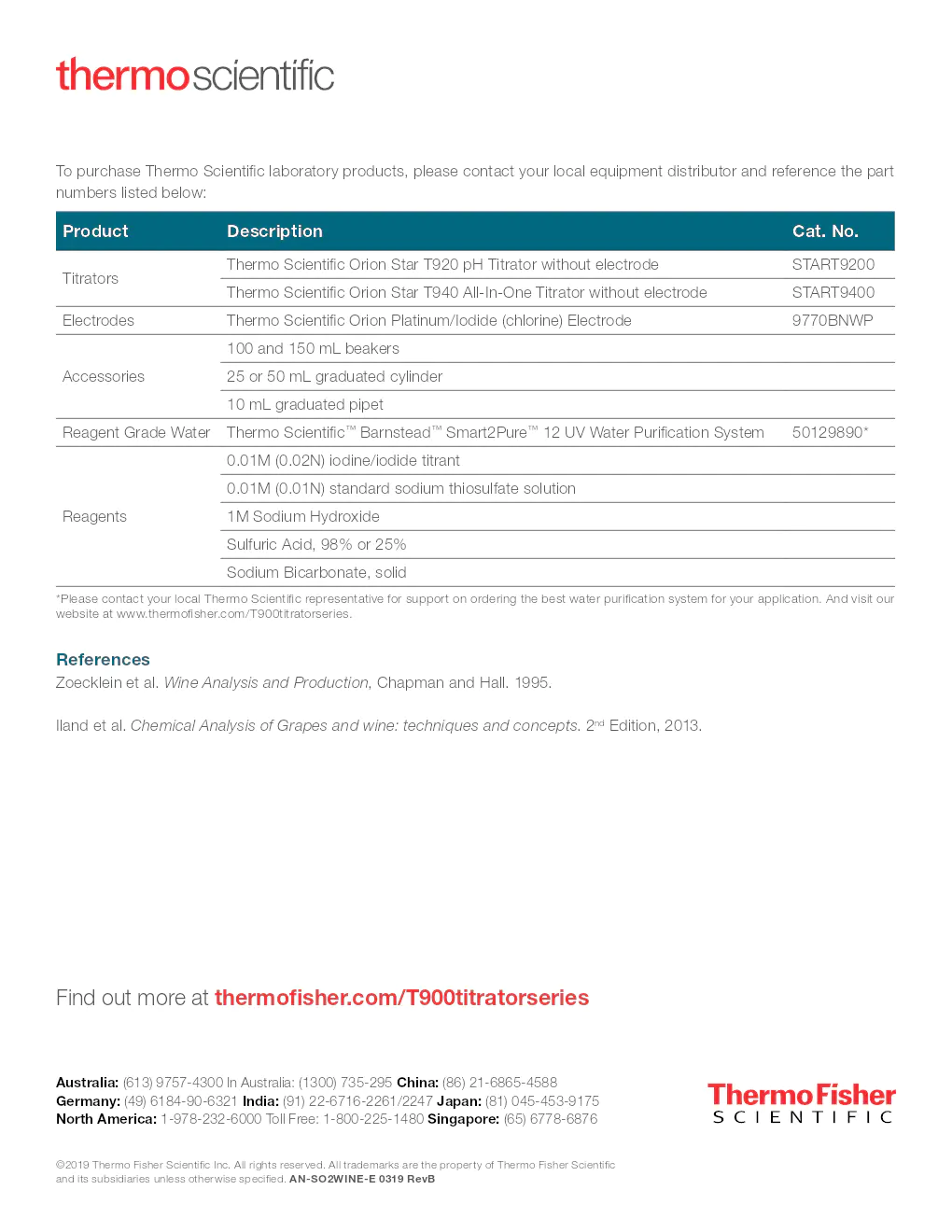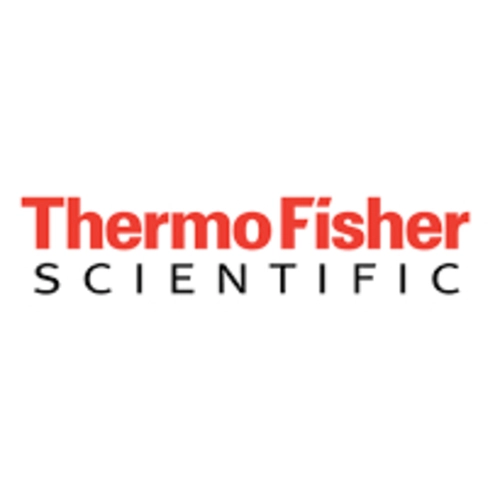note d'application sur l'analyse du dioxyde de soufre dans le vin par titrage automatique méthode ripper
note d'application pour analyse du dioxyde de soufre dans le vin
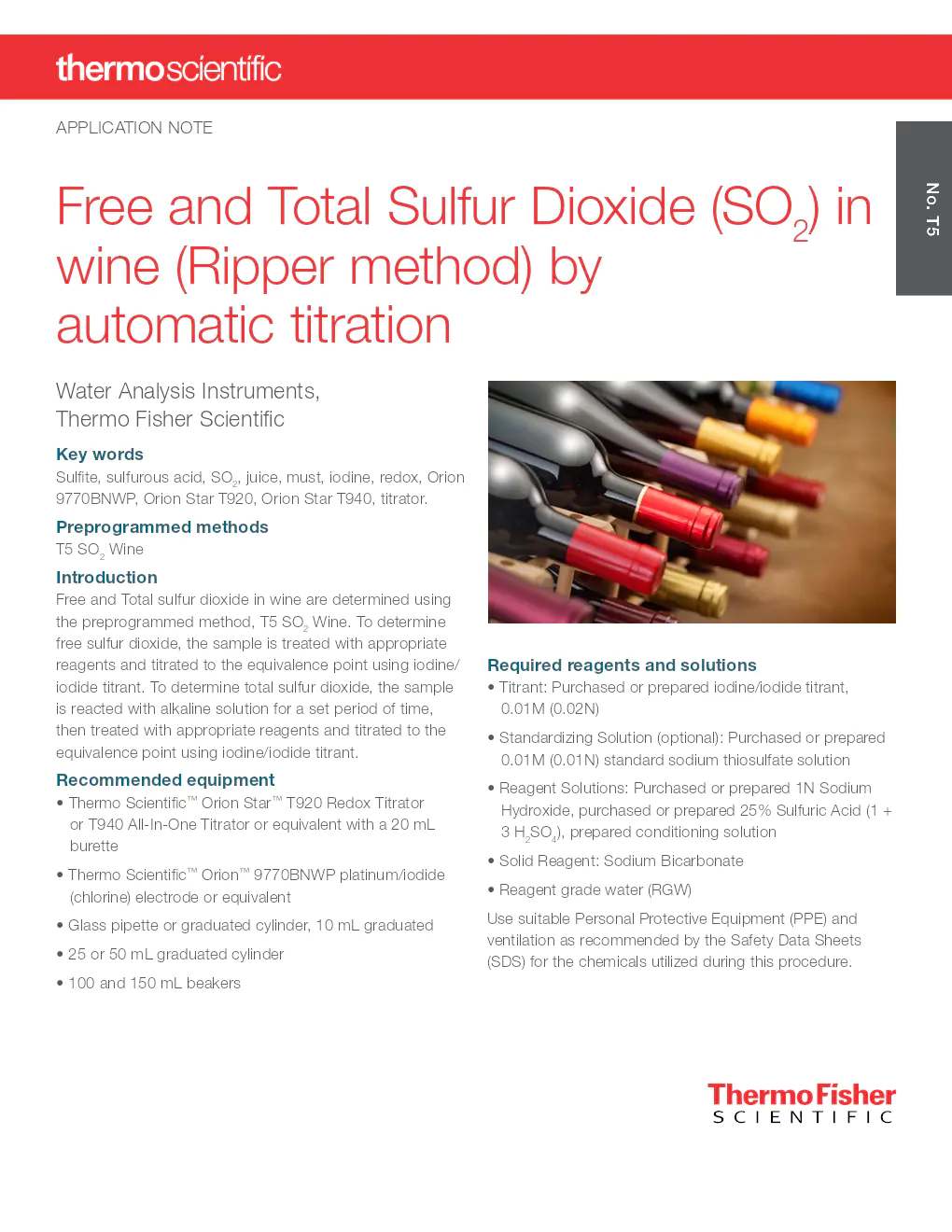
Contenu du document
Introduction
Free and total sulfur dioxide in wine are determined using the preprogrammed method, T5 SO2 Wine. To determine free sulfur dioxide, the sample is treated with appropriate reagents and titrated to the equivalence point using iodine/iodide titrant. To determine total sulfur dioxide, the sample is reacted with alkaline solution for a set period of time, then treated with appropriate reagents and titrated to the equivalence point using iodine/iodide titrant.
Required reagents and solutions
- Titrant: Purchased or prepared iodine/iodide titrant, 0.01M (0.02N)
- Standardizing Solution (optional): Purchased or prepared 0.01M (0.01N) standard sodium thiosulfate solution
- Reagent Solutions: Purchased or prepared 1N Sodium Hydroxide, purchased or prepared 25% Sulfuric Acid (1 + 3 H2SO4), prepared conditioning solution
- Solid Reagent: Sodium Bicarbonate
- Reagent grade water (RGW)
Use suitable Personal Protective Equipment (PPE) and ventilation as recommended by the Safety Data Sheets (SDS) for the chemicals utilized during this procedure.
Recommended equipment
- Thermo Scientific™ Orion Star™ T920 Redox Titrator or T940 All-In-One Titrator or equivalent with a 20 mL burette
- Thermo Scientific™ Orion™ 9770BNWP platinum/iodide (chlorine) electrode or equivalent
- Glass pipette or graduated cylinder, 10 mL graduated
- 25 or 50 mL graduated cylinder
- 100 and 150 mL beakers
Titrator setup
Connect the electrode and the stirrer probe to the titrator. If not previously done, import the T5 SO2 Wine preprogrammed method into the titrator from the Methods screen. Rinse and fill the burette with titrant. See the titrator user manual for details on setting up the titrator. If bubbles are visible in the tubing, dispense titrant until the bubbles have been expelled. Tap the tubing to dislodge bubbles. Consider standardizing the titrant before titrating samples.
T5 SO2 Wine method: Preprogrammed parameters
- Electrode Type: Redox
- Electrode Name: Edit as desired
- Titrant Name: I2
- Titrant ID: Edit as desired
- Conc Input Mode: Standardization
- Nominal Concentration: 0.01 M
- Standardize Tech: Equivalence Pt.
- Number of Endpoints: 1
- Results Units: M
- Standardize Reaction Ratio: 2
- Standard Name: Na2S2O3
- Standard Amount: Fixed volume, 10 mL
- Standard Concentration: 0.010 M
- Pre-dose Titrant Volume: 4 mL
- Max total titrant volume: 10 mL
- Stand. Process Control: User defined
- ?E: 10 mV
- ?Vmin: 0.02 mL
- ?Vmax: 0.100 mL
- dE/dt: 10 mV/min
- t min: 2 seconds
- t max: 8 seconds
- Threshold: 250
- Pre-stir Duration: 5 sec
- Stir Speed: Medium
Sample preparation
Free SO2: Accurately add 25.0 mL of wine to a beaker. Add RGW to the 60 mL mark on the side of the beaker. Proceed to Sample Titration.
Total SO2: Accurately add 25.0 mL of wine. Add 25 mL of 1 N NaOH to a beaker. Mix and allow 10 minutes reaction time. After 10 minutes, add RGW to the 60 mL mark on the side of the beaker. Proceed to Sample Titration.
Sample titration
1. Free SO2
a. From the Methods screen, select option to run the saved method T5 SO2 Wine.
b. Rinse the electrode, stirrer, and dispenser with RGW. Place the electrode, stirrer, and dispenser into the prepared sample in the beaker. Ensure that the dispenser tip is inserted below the surface of the sample. Ensure that the reference pellet on the side of the electrode is immersed.
c. Add 5 mL of 25% sulfuric acid to the beaker. Start the titration immediately. When the stirrer starts to spin, immediately add about 1 g (¼ teaspoon) of solid bicarbonate to the beaker. The sample will bubble and foam. Addition of the bicarbonate may be omitted if results are satisfactory without it.
d. Results are reported as mg/L SO2.
2. Total SO2
a. From the Methods screen, select option to run the saved method T5 SO2 Wine.
b. Rinse the electrode, stirrer, and dispenser with RGW. Place the electrode, stirrer, and dispenser into the prepared sample in the beaker. Ensure that the dispenser tip is inserted below the surface of the sample. Ensure that the reference pellet on the side of the electrode is immersed.
c. Add 10 mL of 25% sulfuric acid to the beaker. Start the titration immediately. When the stirrer starts to spin, immediately add about 1 g (¼ teaspoon) of solid bicarbonate to the beaker. The sample will bubble and foam. Addition of the bicarbonate may be omitted if results are satisfactory without it.
d. Results are reported as mg/L SO2.
Results
- Free SO2 in white wine: Average 26.3 mg/L, SD 0.6
- Free SO2 in red wine: Average 29.9 mg/L, SD 0.7
- Total SO2 in white wine: Average 65.9 mg/L, SD 0.8
- Total SO2 in red wine: Average 51.8 mg/L, SD 0.9
Titrant
Over time, standard titrant solutions age and can change concentration. For higher accuracy, determine the exact concentration by standardizing the titrant. It is common to standardize on a weekly basis, but other standardization frequencies may be suitable.
Titrator and electrode care
- Daily Care: If bubbles are visible in the titrator tubing, dispense titrant until bubbles have been expelled. Tap tubing to dislodge bubbles that stick. At the start of the testing, immerse the electrode in diluted titrant conditioning solution for 10 or 15 minutes. Rinse electrode well with RGW before and between titrations. Clean any foreign materials from the platinum sensor by wiping gently with a moistened lint-free wiper. Storage: Thoroughly rinse the electrode with RGW and store the electrode dry.
- Weekly or Biweekly Care: Consider standardizing the titrant on a weekly basis, or more frequently, as desired. Prepare a small batch of conditioning solution for the week.
- As Needed: For slow or drifty electrode response, soak 15 minutes in warm 1% laboratory detergent while stirring. Gently brush the platinum sensor and reference pellet with a soft toothbrush. Rinse well with RGW afterward. If still slow or drifty, use Orion pH cleaning solution C, immersing only the platinum sensor. Do not immerse the reference pellet. Rinse well, then soak in conditioning solution solution 10 or 15 minutes before use. See the electrode user manuals for maintenance details.
